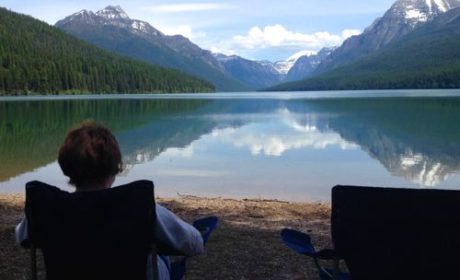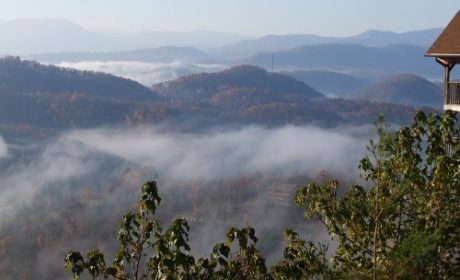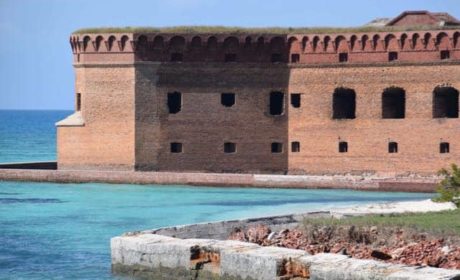When it comes to New Mexican travel, you won’t find a more vibrant state in the US. From colorful Santa Fe to off-the-beaten-path El Morro active boomers will find plenty of adventure.
Our previous trips to the Land of Enchantment have been nothing short of spectacular, especially our New Mexico Backroads Adventure. Guest writer, Sam Lowe, is here to show there are more adventures left as he takes us to two incredible off-the-beaten-path New Mexico national parks.
New Mexico’s motto is “the Land of Enchantment,” and truer words have rarely been spoken. The state is filled with all the touristy cliches, including “wide-open vistas,” “breathtaking scenery,” “endless skies,” “eclectic landscapes” and “vast areas of serenity.”
But two of my favorite go-to locations are rather confined when compared to the openness so heralded by the state’s tourism promoters. One—the White Sands National Monument—is limited by manmade boundaries because it’s on federal land.
The other—Carlsbad Caverns National Park—has natural restrictions because it’s underground. Both, however, are spectacular in their own right as well as being fun national park adventures.
Boomer Travel Tip
Looking for more New Mexico travel ideas? Get my ebook: New Mexico Backroads Weekend Adventure.
Visiting Carlsbad Caverns National Park

Carlsbad Caverns, located in the southeastern section of the state, is noted for two reasons. First, it’s a premier tourist attraction that holds up well against any other like it anywhere else in the world. Second, the caverns contain the state’s longest elevator shaft.
The shaft is 750 feet one way, about the height of a 75-story building. Construction crews worked nearly eight months and used 12 tons of dynamite to blast it out of solid rock in 1931. And the elevator they installed back then is still in use today, taking visitors up and down at the rate of nine miles per hour.
The more adventuresome can take the Natural Entrance Route, which is longer in both time required and distance traveled. It’s a one-mile hike that traces the initial explorers’ routes.

Regardless of which method is used to get there, arriving at the caverns, visitors will find themselves in an eerie landscape populated by strange formations that pop up from the eroded floors and hang from the ghostly ceilings. The spectacular cave decorations, naturally formed over millions of years by dripping water, are called stalagmites and stalactites.
And here’s an easy way to remember which is which: Stalactites, the shapes that hang down from above, are spelled with a “c” which stands for “ceiling.” And stalagmites, which rise from below, are spelled with a “g” which stands for “ground.”
Once that’s settled, guests can either go it alone or take a guided tour. Both methods cover about a mile along paved pathways and gentle slopes that go up and down as much as 80 feet before reaching the end.
Because most of the formations are well lit by strategically-placed floodlights, camera-toters don’t have to use flash. However, those who insist they need more light won’t be cautioned by rangers because, they’ll say, the columns and pillars have been there so long that flashes aren’t going to damage them. But sometimes, the rules change so it’s best to ask before blasting.
Boomer Travel Tip
Need help planning your next trip to New Mexico? Start at our New Mexico Travel Planner!
The caverns are about 25 miles southwest of Carlsbad along U.S. Highway 62/180. For hours and information, contact the park at (505) 785-2232. Start your research for hotels in Carlsbad with us.
Exploring White Sands National Monument
For those people who, like me, have experienced winter in snow country, driving through White Sands National Monument can bring up some chilly memories. The landscape is covered with white that is very reminiscent of January in places like North Dakota, Saskatchewan and Maine.
The ground is white, the hills are white, all the vegetation is covered with white. And there are kids sliding down white slopes.

But it’s not snow. It’s gypsum.
The monument sits in the Tularosa Basin, the world’s largest gypsum dune field, engulfing 275 square miles of the Chihuahuan Desert. The mineral was deposited at the bottom of a shallow sea that covered the area about 250 million years ago.
Gypsum, a hydrous form of calcium sulfate, is rarely found in the form of sand because it is water soluble. But, although rain and snow from the surrounding mountains dissolve the gypsum, there are no waterways to drain the area and annual rainfall is measured in fractions so the mineral merely dries up and stays put.

If the winds blow some of it away, other winds bring it back in a never-ending cycle. Visitors can take leisurely drives through the white stuff while wearing shorts and tee-shirts without fear of shivering.
The plant life that survives in this rather harsh element adds vibrant color to the panorama and, just like in cold country, the roads have to be bladed occasionally to rearrange the shifting sands.
White Sands National Monument is located on U.S. 70 about 12 miles south of Alamogordo. For more information, check out its NPS page or call (575) 479-6124. Start your search for hotels near White Sands with us.



